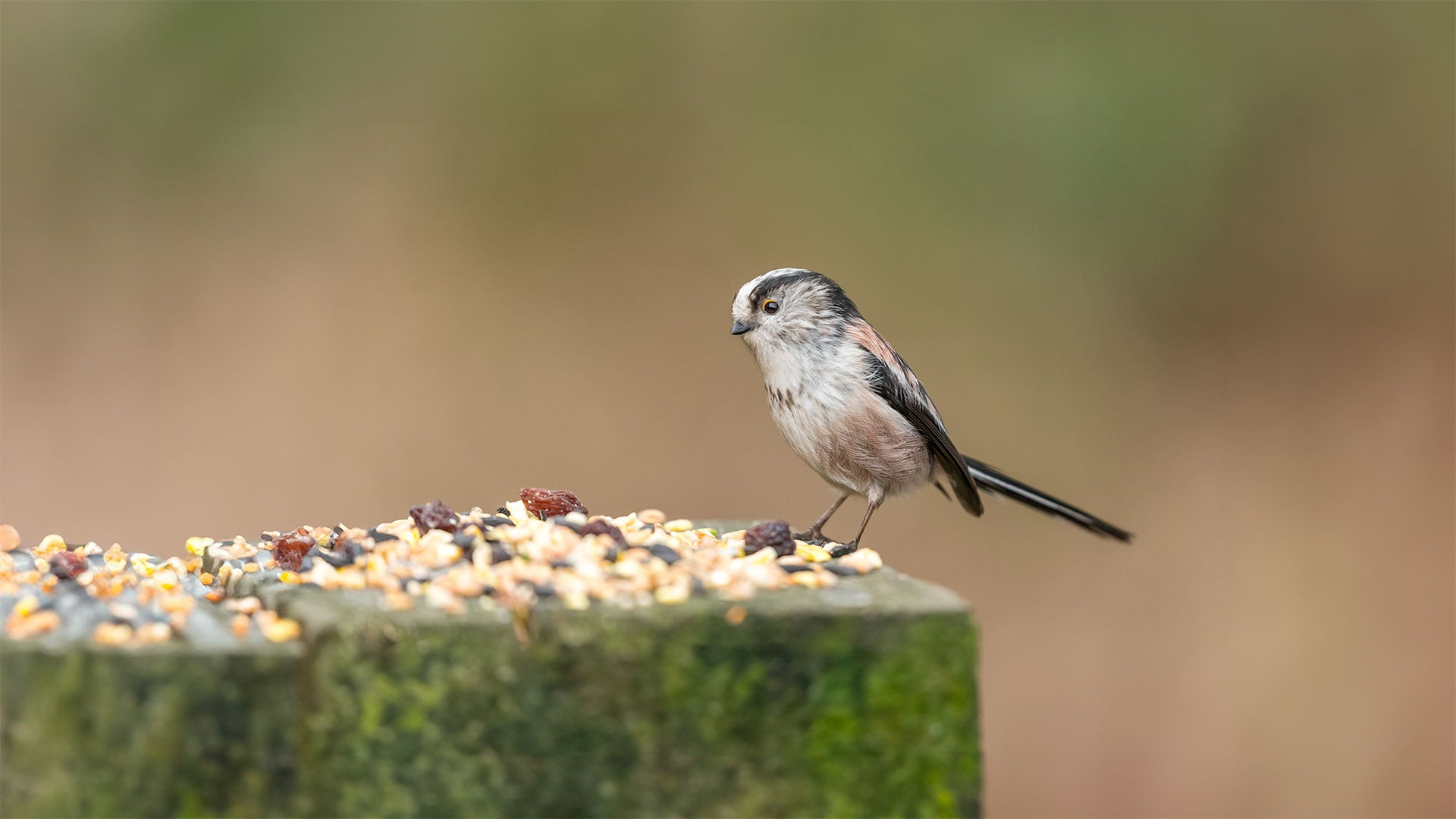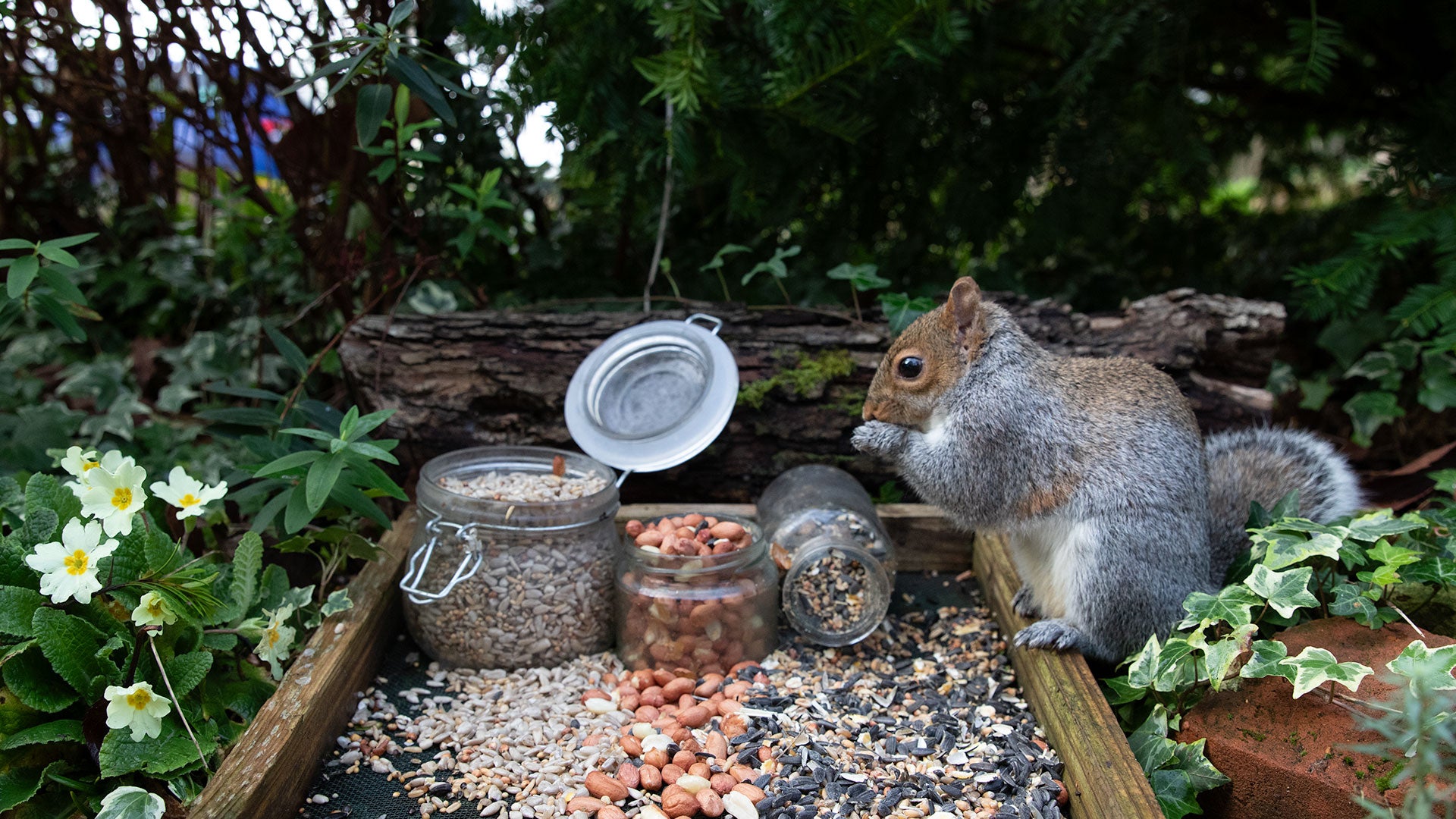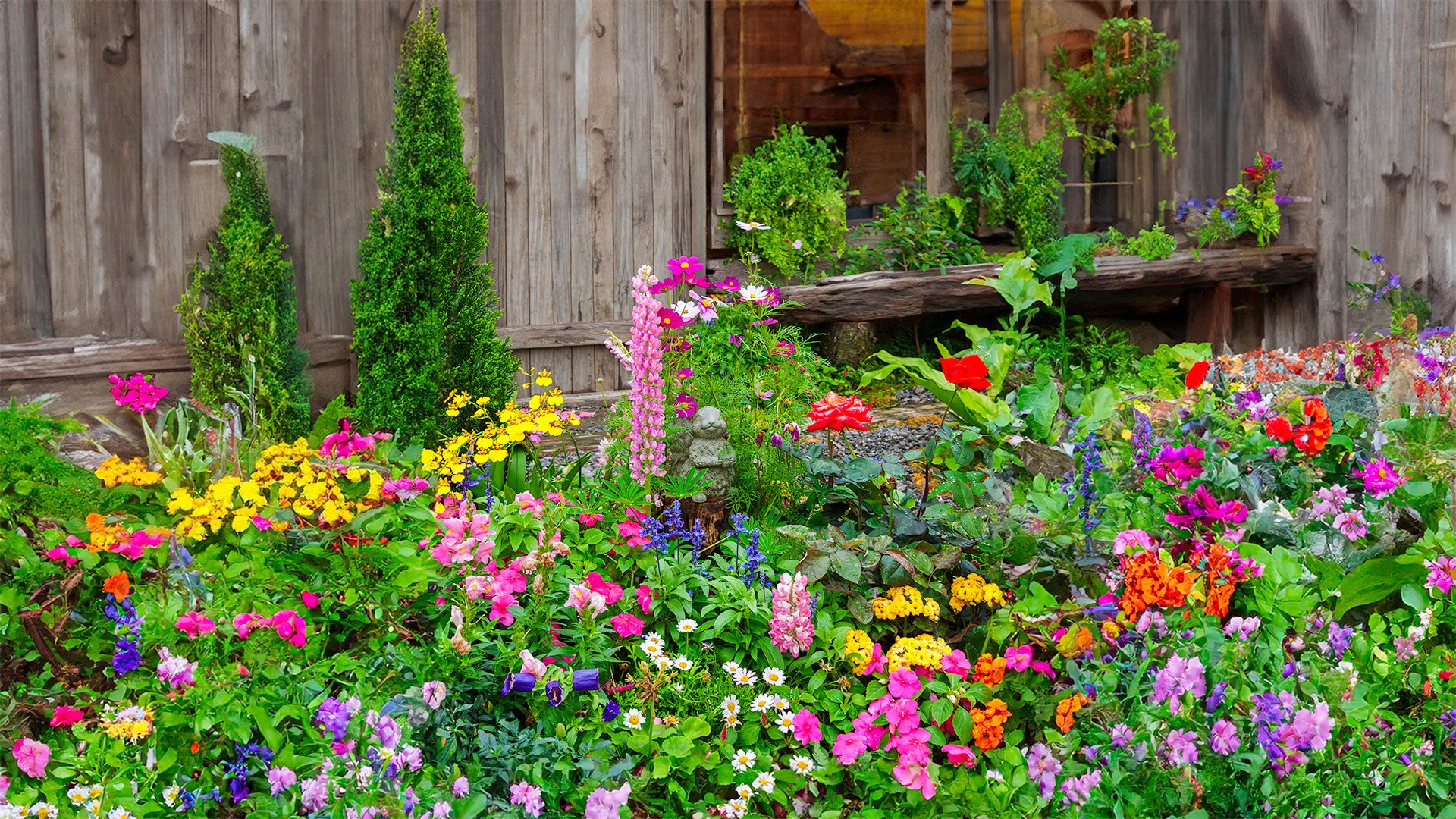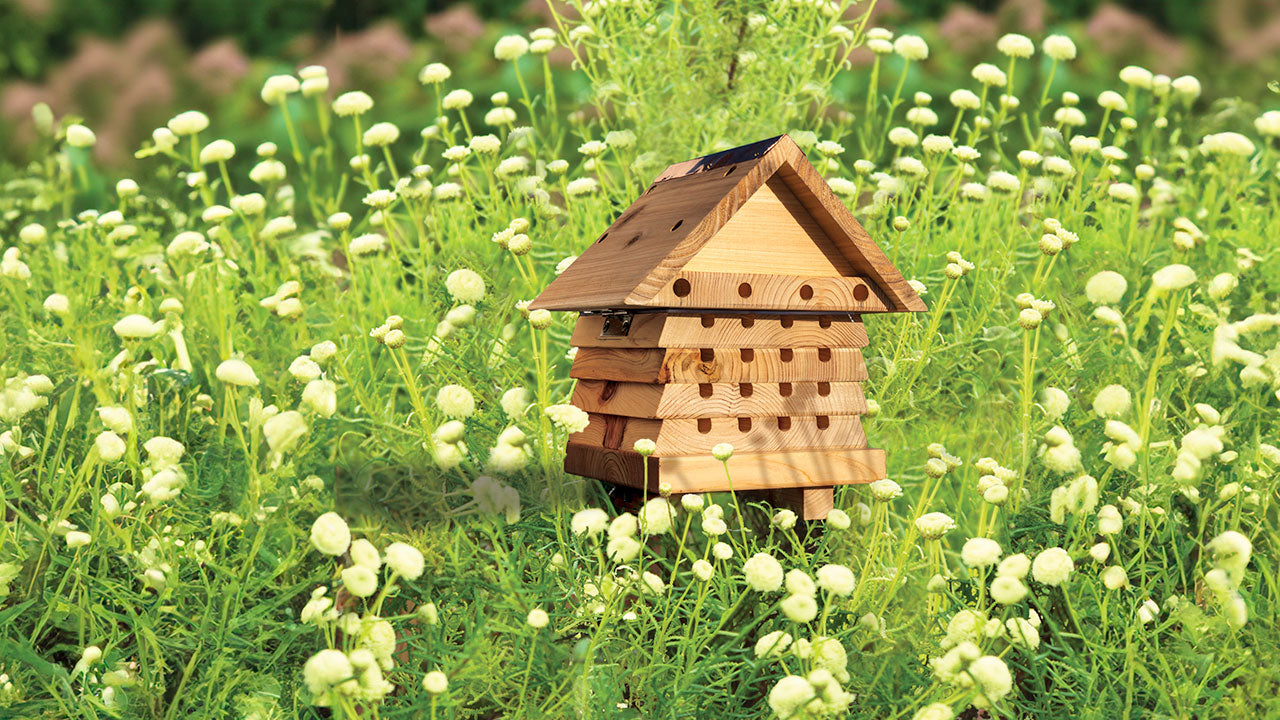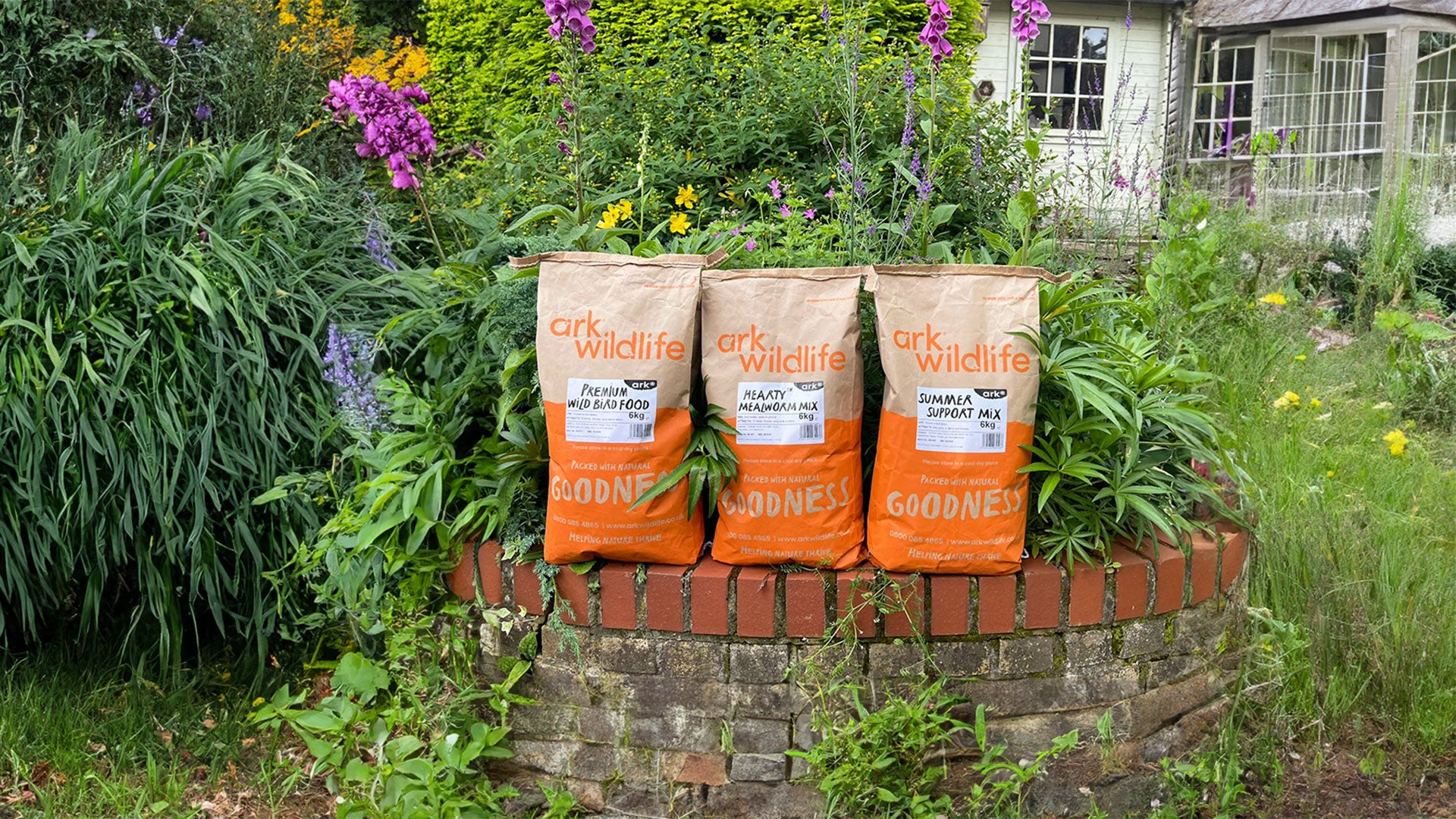Spring is a season of renewal and transformation in the natural world. As the days grow longer and the temperatures rise, birds begin their busiest season, courting, nest-building, breeding, and raising their young. This time of year presents unique feeding challenges for birds and opportunities for garden bird lovers. By providing the right food, you can support birds through this critical period while enjoying the wonderful spectacle of nature up close.
Why Feeding Birds in Spring is Important
Spring may bring an abundance of natural food sources from emerging insects, budding plants, and fresh seeds, but this bounty is unpredictable and is always weather dependant. Birds are burning through their energy reserves, not only searching for food but also courting, nesting, and rearing young. Picture a blackbird tirelessly darting back and forth, beak brimming with wriggling mealworms for its hungry brood. Or a blue tit, tirelessly hammering at a sunflower heart, snatching quick meals between feeding fledglings. The reality of spring is one of frenzied activity, and your feeders can become a lifeline during these demanding months.
What is the Best Bird Food in Spring?
1. High-Protein Foods for Breeding Birds
With nestlings to feed and territories to defend, birds need protein-rich foods more than ever in spring. You might notice robins and blackbirds picking through the soil, searching for grubs to fuel their young. By feeding the parents we provide them with the energy they need to forage and feed their young. Also, we can provide protein-packed foods suitable for nestling ensuring they have enough energy to grow and face the season’s challenges.
- Mealworms: These mimic natural insect prey and are a favourite among robins, blackbirds, and tits
- Suet pellets: A soft and energy-rich option that supports birds during nesting season
- Sunflower hearts: Easy to eat and bursting with nutrients
- Softbill food: A great choice for species like blackbirds, which prefer softer textures
- Peanut granules: Chopped peanut kernels high in oil and protein and safe for chicks and fledglings

2. Live and Dried Mealworms - A Crucial Springtime Food
Few sights are as rewarding as watching a parent bird collect mealworms to carry back to their young. Live mealworms are an especially valuable offering, closely replicating the high-protein insect diet that chicks require. If live food isn’t an option, dried mealworms are an excellent alternative, just soak them in warm water for a few minutes to make them more digestible.
Place mealworms in shallow dishes or on bird tables, and you may soon find robins, blackbirds, and even wrens eagerly snapping them up.
3. Seed Mixes for Energy and Nutrition
Seed mixes remain a valuable food source in spring, but it’s important to choose the right blend. While winter requires high-fat mixtures, spring calls for something a little lighter.
- Spring and summer seed mixes: These are specially formulated to provide essential nutrients without excess fat
- Sunflower hearts: Soft and shell-free, ideal for busy parents needing quick meals
- Robin & blackbird mixes: softer in texture and no husks providing 100% nutrition for ground feeding birds
- Sultanas and raisins: Blackbirds and thrushes relish these soft treats
4. Suet and Fat Balls - For a Boost of Energy
Suet might be more commonly associated with winter, but in spring, it remains an invaluable energy source particularly on colder days when natural food is still scarce. Birds like starlings, woodpeckers, and tits appreciate a quick suet boost to sustain them through demanding days.
- Seek high fat content suet varieties that don’t harden in cooler mornings but won’t melt in the midday sun
- Avoid netted fat balls to prevent birds from getting tangled
- Offer suet in hanging feeders or on ground trays to attract a variety of species.
5. Fresh Fruits for Vitamins and Hydration
As spring progresses, birds start to favour fruits, which provide both nourishment and hydration. Imagine a blackbird pecking at a juicy apple slice or a song thrush carefully picking at a halved grape, all treats they rarely refuse.
- Apple and pear slices Loved by thrushes and blackbirds
- Grapes Cut them in half to make them easier to eat
- Bananas A soft and energy-rich snack
Offering fresh fruit is a wonderful way to encourage fruit-loving species into your garden while supporting their dietary shift towards natural sugars.
6. Kitchen Scraps - Safe and Nutritious Options
Your kitchen might already be stocked with some great bird food options. However, it’s important to offer only safe, natural foods.
- Cooked rice and pasta A great carbohydrate source for energy (don’t add any salt)
- Unsalted, crumbled cheese Especially loved by robins and wrens
- Wholemeal bread in moderation Only small amounts, moisten it and never if its mouldy
- Unseasoned cooked potatoes A soft, digestible option for hungry birds
Avoid anything heavily processed, salty, or sweet, birds need natural nutrition, not human indulgence.

What NOT to Feed Birds in Spring
While offering food to birds is a wonderful way to support them, some items can do more harm than good—especially in the warmer months. Here’s what to avoid:
❎ No bread - Bread lacks essential nutrients and can leave birds feeling full without proper nourishment.
❎ No milk - Birds cannot digest milk properly, and it can cause stomach upset or dehydration.
❎ No old or mouldy food - Warmer temperatures encourage bacteria and mould growth, which can be toxic to birds.
❎ No salted or dry roasted peanuts - Peanuts meant for human consumption often contain high salt levels, which can be dangerous to birds. Always use bird-safe peanuts.
❎ No chocolate - Just like in winter, chocolate is toxic to birds and should never be offered.
❎ No sticky or melting foods - Suet and fat-based products can turn rancid in warmer weather and coat birds' feathers, making it harder for them to fly and stay dry.
❎ No cooked leftovers with seasoning - Foods cooked with salt, garlic, onions, or spices can be harmful to birds.
Top 10 Spring Bird Feeding Tips
- Switch to season-appropriate foods: Lighter seed mixes, mealworms, and fruit are ideal in spring.
- Provide fresh water daily: Birds need water for drinking and bathing, especially as temperatures rise.
- Soak dried mealworms: This makes them more digestible and appealing to chicks.
- Avoid whole peanuts: Chicks can choke on them. Instead, offer crushed peanuts or peanut granules.
- Keep feeders and tables clean: Regular cleaning prevents disease transmission.
- Place feeders near cover: Birds feel safer feeding where they can quickly escape predators.
- Offer a variety of foods: Different birds have different dietary needs, so provide a mix.
- Don’t use netted fat balls: Birds can get tangled; use mesh-free options.
- Provide nesting material: Wool, moss, dry grass and small twigs help birds build strong nests. DO NOT use dog and cat hair treated with flea treatment.
- Be patient: As natural food becomes more abundant, birds may visit feeders less frequently.
Supporting Birds Beyond Feeding in Spring
Beyond filling feeders, there are plenty of ways to help birds thrive in spring. Installing nest boxes gives cavity nesting birds like blue tits a safe place to raise their young, while planting native flowers and shrubs encourages insect life and a natural food source for chicks. Leaving wild areas in your garden, such as a patch of long grass or a brush pile, offers vital shelter and nesting material.
Even small changes, like keeping cats indoors during peak feeding times, can make a huge difference to fledgling survival rates.
Feeding birds in spring isn’t just about providing food, it’s about sharing in the season’s energy and renewal. By offering protein-rich foods, fresh water, and a welcoming environment, you help these wonderful creatures through their most demanding time of year. And in return, you get the joy of watching their daily dramas unfold in your own back garden. What could be more rewarding?
Explore our full range of spring bird foods and give your garden visitors the nourishment they need this season!

